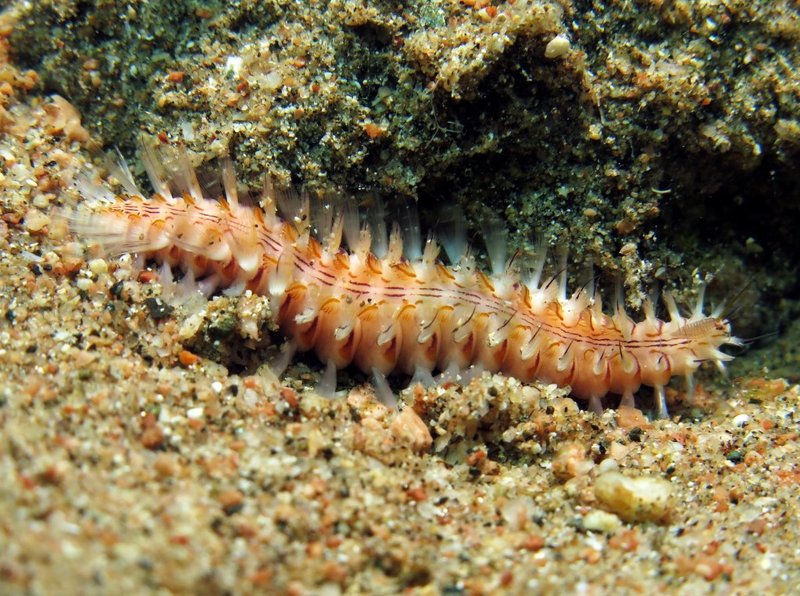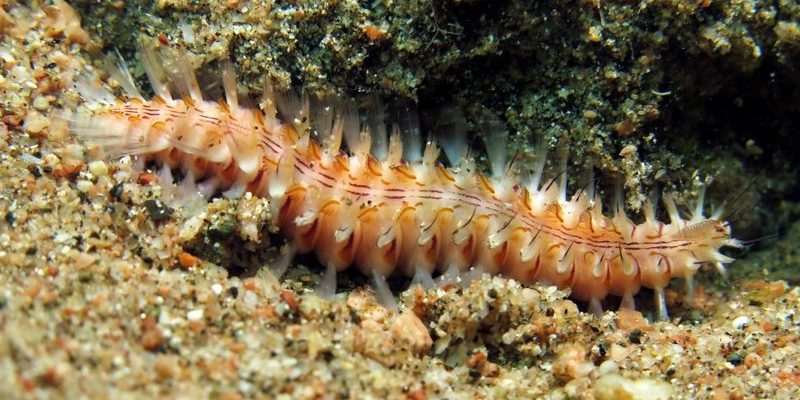
Think of bristle worms as the “good and bad” of your ocean ecosystem. Some, like the beneficial ones, help break down decaying material and keep things clean. Others, however, can wreak havoc in tanks or marine habitats by outcompeting other critters for food. This article will guide you through the process of identifying those pesky species so you can take appropriate action before they become too much of a problem.
What Are Bristle Worms?
Bristle worms belong to the class Polychaeta, which translates roughly to “many bristles” in Greek. These creatures are segmented worms, and their bodies are adorned with tiny bristles called chaetae. You might think of them as the “hairy critters” of the worm world. Generally, bristle worms can be found in marine environments ranging from tidal pools to deep oceans, and they thrive in both sand and rocky substrates.
While most species play a beneficial role in the ecosystem, some can become pests. The key difference lies in their behavior and diet. Beneficial bristle worms often scavenge for decaying organic matter, while the pests tend to be more aggressive feeders, consuming everything in sight. So, it’s essential to know what you’re dealing with before deciding how to manage them.
Identifying Pest Species
Spotting the right kind of bristle worm can feel like searching for a needle in a haystack, but there are some telltale signs to look for. Pest species tend to be larger and more robust than their beneficial counterparts. They often exhibit brighter colors, which can be a warning sign of their potentially harmful nature. Here are a few characteristics to keep an eye on:
- Size: Pest bristle worms often grow larger than 3 inches.
- Color: While beneficial ones are usually dull in color, pests can be vivid greens, oranges, or even purples.
- Behavior: If you see them actively hunting for food, especially at night, it’s a red flag.
Understanding these traits can help you identify and differentiate between the various species, making it easier to determine your next steps.
Common Species and Their Traits
When it comes to pest bristle worms, several species stand out due to their notorious behavior in marine tanks. Here are a couple of the most common culprits:
Fire Worms (Hermodice carunculata)
Fire worms are notorious for their painful sting. They have a distinctive bright red or orange coloration, with long bristles that can cause irritation if touched. These worms can grow up to 12 inches long and are typically found hiding in crevices or under rocks during the day. If you see their bright colors or long bristles peeking out from a hiding spot, it’s best to keep your distance!
Bobbit Worms (Eunice aphroditois)
Bobbit worms can reach impressive lengths of up to 10 feet! They are often green or brown and have a very different hunting style. They lay in wait, camouflaged among rocks or substrate, and strike quickly to capture prey. Although they might seem fascinating, they can disrupt smaller community tanks by preying on your fish and invertebrates when food is scarce.
Where to Look for Pest Bristle Worms
Understanding where to find these pests can help you keep an eye out and actively manage potential infestations. Pest bristle worms tend to prefer areas rich in organic matter, making certain spots in your tank more susceptible. Here are the typical locations to check:
- Under Rocks: Many bristle worms hide in crevices, so check the rockwork in your aquarium.
- Sand Bed: They love to burrow into sandy substrates, so a thorough inspection of the sand bed is crucial.
- Behind Equipment: Look for them hanging out behind pumps or filters where food particles collect.
By inspecting these areas regularly, you’ll be better equipped to spot any unwanted guests before they establish themselves in your system.
How to Manage Pest Bristle Worms
If you’ve identified pest species among your bristle worms, don’t panic. There are several methods to manage or eliminate them effectively. Here’s how you can tackle the issue:
1. **Manual Removal:** If you see a few worms, you can try to manually remove them. Use tweezers to grab them cautiously, and make sure to wear gloves to avoid those nasty stings from fire worms.
2. **Trap Them:** Create traps using pieces of shrimp or fish. Place them in the tank, and the worms will be attracted to the bait. Remove the traps after a few hours to collect the pests.
3. **Reduce Food Sources:** Pests thrive when there’s an excess of food. Ensure you’re not overfeeding your tank and regularly clean out uneaten food. Less food means less temptation for those pesky bristle worms.
4. **Biological Control:** Consider introducing specific fish or other marine creatures that naturally prey on bristle worms. Just be sure they’re compatible with your existing tank inhabitants!
Prevention Tips
Preventing pest bristle worms from taking hold in your aquarium is much easier than dealing with them later. Here are some proactive steps to keep them at bay:
- Quarantine New Arrivals: Always quarantine new fish or invertebrates before adding them to your tank. This helps prevent any unwanted species from hitching a ride.
- Regular Cleanup: Regularly clean your tank and remove detritus to limit potential food supplies for the worms.
- Monitor Water Quality: Maintaining good water quality helps keep your tank inhabitants healthy and less susceptible to pests.
Taking these precautions will help create a less hospitable environment for pest bristle worms and other unwanted visitors.
Spotting pest species of bristle worms might seem daunting at first, but with a little vigilance and knowledge, you can easily identify and manage them. By understanding what to look for, where they hide, and how to handle them, you can protect your aquatic environment from potential harm. Remember to keep your tank clean, introduce compatible species, and always be on the lookout for any suspicious activity. With these tips in hand, you’ll have a much easier time keeping your aquarium safe and thriving! Happy fishkeeping!

